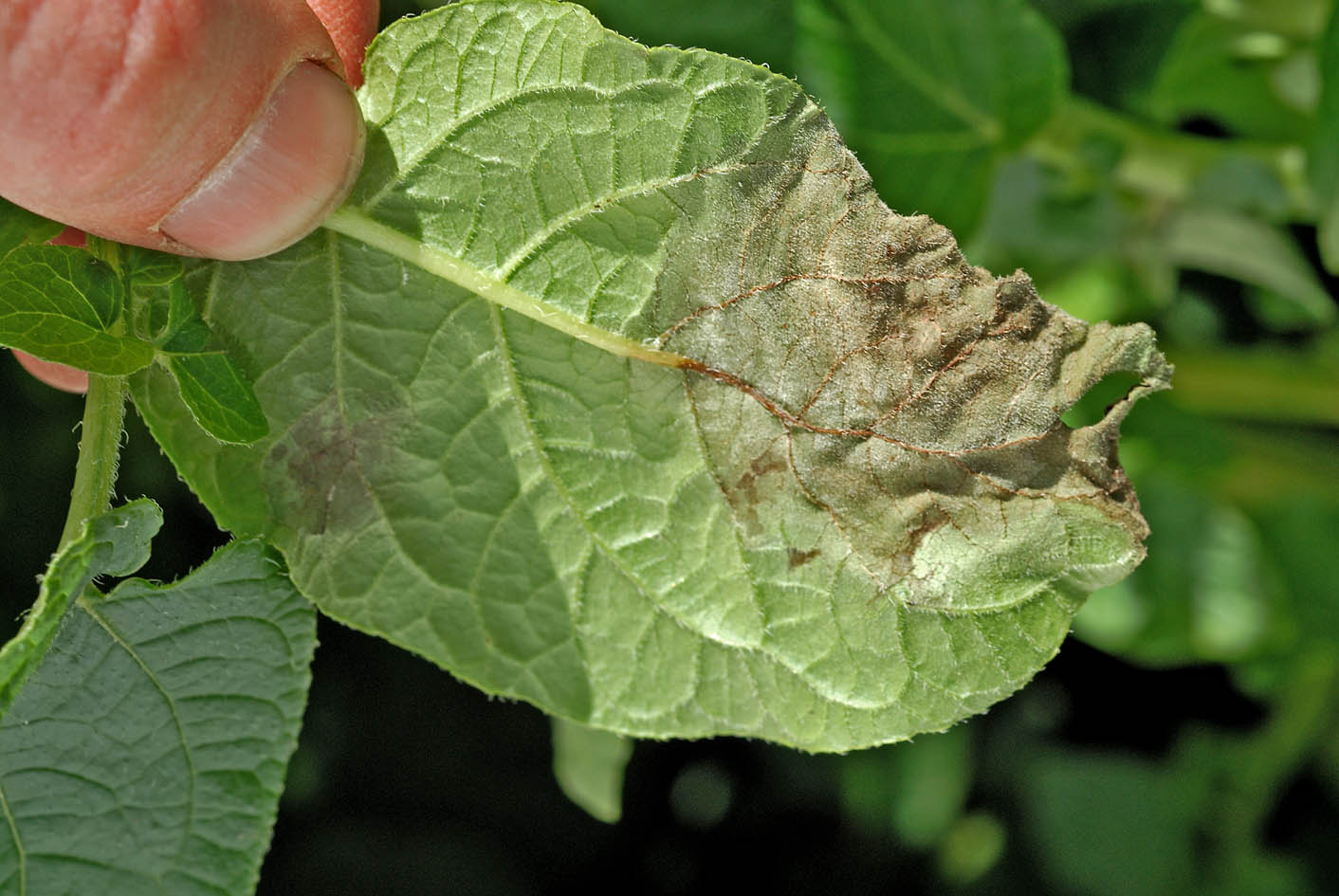
Scientists at The James Hutton Institute are spearheading cutting-edge research to support the UK’s National Action Plan for pesticide reduction, combining AI, big data, and biology to revolutionise Integrated Pest Management (IPM) in Scotland. From forecasting potato virus risks to advancing biological alternatives to conventional pesticides, their work helps farmers target pesticide use while safeguarding yields and the environment. Underpinned by RESAS funding, this science-driven approach is reshaping pest management, ensuring sustainable farming and future-proofing Scotland’s vital agricultural sector.
Scientists at The James Hutton Institute are leading work on Integrated Pest Management (IPM) and thereby supporting the key actions of the recently published UK National Action Plan (NAP)1 for the Sustainable Use of Pesticides. Our research is underpinned by vital funding from the Rural & Environment Science & Analytical Services Division of the Scottish Government and in turn leverages significant additional funding from a range of sources. We collaborate globally whilst focusing on Scotland’s ambitions, making use of big data, artificial intelligence, and knowledge of pest and pathogen biology to reduce reliance on chemical pesticides while maintaining agricultural productivity and protecting the environment.
Arable farming contributes 85–90% of UK pesticide use2. For example, in Scotland3 virtually all seed and ware potato crops were treated with fungicides in 2022, receiving on average 8 to 10 fungicide applications per season, primarily for the control of potato late blight caused by Phytophthora infestans. Pesticide use remains vital for crop production and whilst improper use risks resistance development and negative environmental impacts, pesticide reduction strategies are not simple. For example, removal of an active ingredient from the market can increase applications of less effective alternatives and increase uncertainty. Smarter management strategies and their implementation in practice are essential and applied research has a critical role in achieving these aims. Examples of our key research contributing to improved targeting of necessary pesticides, and some necessary future actions are described:

Potato leaf showing symptoms of blight caused by the fungal pathogen Phytophthora infestans. Photo credit: Dr David Cooke.
Data-driven pest and disease forecasting
Hutton researchers use advanced modelling to help reduce pesticide applications by predicting pest and disease risks.
- Potato viruses: Management of potato viruses has become more challenging in recent years across Europe, and growers face an unprecedented need for information on risk. AI was applied to statutory crop inspection data to develop new national and local warning systems for forecasting virus risk. These have been rolled out to the entire potato industry in 2024-5 to optimise virus management programmes and therefore insecticide use against their aphid vectors.
- Potato cyst nematodes: Potato cyst nematode (PCN) levels are increasing in Scottish soils, and land found to be infested with the pest cannot be used to grow seed potatoes. To combat this threat to our seed industry, a new AI model is being developed to predict species-specific infestation in any location. This new tool will provide predictions for areas not subject to compulsory testing, such as ware crops, and facilitate judicious use of nematicides and more effective deployment of host resistance.
- Barley diseases: Leaf spot caused by the fungal pathogen Ramularia and barley scald caused by the fungi Rhynchosporium are the two major diseases affecting barley crops. Analysis of long-term datasets has quantified how environmental conditions and management interventions affect disease risk. Two forecasting systems have been developed and are being used for improved targeting of sprays in major barley-producing countries.
- Late blight: New destructive pathogen strains emerge regularly, causing major control problems for farmers. AI techniques applied to data from Hutton’s national late blight monitoring were used to develop a model for predicting strains within an outbreak, enabling data-driven decision-making to complement our other tools and optimise fungicide use.
Barley foliage showing early symptoms of scald caused by the fungal pathogen Rhynchosporium commune. Photo credit: Dr Lorena Rangel
Advancing biological alternatives to chemical pesticides
The NAP aims to reduce reliance on chemical pesticides, promote sustainable pest control, and encourage IPM. Our research into biological control and plant elicitors, for use as alternatives to, or in combination with, chemical pesticides, directly supports these objectives, offering viable, eco-friendly solutions. Examples of research at the Hutton include:
- Biological control: Established leaf microbes which are directly in contact with the target pathogen are being investigated as potential biocontrol agents. For example, bacterial isolates of Pantoea sp. and Exiguobacterium sp. cultured from barley leaves antagonise the fungal pathogen Rhynchosporium in laboratory studies, offering a foundation for further studies in their use on crop plants.
- Cultural control: We are exploring how soil amendments and integrated cropping systems can support low input farming via the creation of pathogen-suppressive soils. Using next-generation sequencing, changes in microbial communities in soils and plants are being assessed, enabling targeted interventions to support plant resilience.
- Elicitors: Species of the bacteria Bacillus and biostimulants used to promote crop growth including laminarin and potassium phosphonate are being tested to induce resistance to pathogen infection in crops. Longer-term these options can be incorporated into integrated pest management (IPM) strategies for a range of diseases, complementing reduced application of chemical pesticides.
Research-backed contributions to Integrated Pest Management (IPM)
As an example, Hutton research makes a significant contribution to sustainable potato late blight IPM to minimise and optimise fungicide inputs. This includes:
- Hutton Criteria: We provide a weather-based national blight forecasting system, BlightSpy, to improve fungicide timing and save wasted applications.
- Fight Against Blight: UK-wide monitoring now forewarns the industry on the emergence of fungicide resistant strains. Pesticide usage statistics demonstrate clear industry responses to Hutton data, extending the life of active ingredients and preventing use of ineffective pesticides.
- European Surveillance: Hutton’s coordinating role in EuroBlight means we provide real-time updates and support strategic planning for resistance risk management by Scottish growers.
- Host resistance: Blight resistant varieties can be highly effective, but their potential is not fully realised. Our research focuses on identifying and deploying cultivars with durable resistance.
- IPM Trials: Ongoing testing of blight-resistant varieties combined with optimised predictive tools and biologicals is key to meeting NAP goals.
Future areas for action to achieve the aims of the NAP
- Integrate epidemiological studies with an understanding of external influences to identify weaknesses in the current cropping systems and propose control strategies for the future.
- Underpinning Research: A concerted applied R&D programme to monitor and understand current and emerging pest and disease risks, to develop effective pesticide alternatives and improved crop genetics is needed.
- Enhanced Monitoring Systems: Track emerging pesticide and host resistance and adjust practices accordingly in real time.
- Promote IPM Adoption: Work with stakeholders to test and demonstrate combinations of forecasting tools, resistant varieties, crop rotation, pesticides and biocontrol.
- Incentivise Sustainability: Reward growers for adopting IPM practices where these are practical.
Through predictive modelling, plant pathology, innovation in the design and delivery of IPM, real-time pathogen surveillance and co-construction of practical solutions with policy and industry, SEFARI scientists provide the scientific backbone for Scotland’s pesticide reduction efforts. This work will empower growers to implement effective IPM strategies, helping achieve the goals of the National Action Plan while protecting crop yields, the environment, and the profitability of Scotland’s agricultural industry.
References
1DEFRA. UK Pesticides National Action Plan 2025: Working for a more sustainable future - GOV.UK
2DEFRA. Agriculture in the United Kingdom 2023.
3SASA. Pesticide Usage in Scotland: Arable crops and Potato stores 2022.
Further Reading
Landscape‐scale patterns and predictors of potato viruses in Scotland
P Skelsey - Plant Pathology, 2024
AC Newton, P Skelsey - Scientific Reports, 2023
Landscape epidemiology of potato blackleg
P Skelsey, F Civita, S Humphris - Phytopathology®, 2023
A Torro‐Galiana, DEL Cooke, P Skelsey - Plant Pathology, 2023
JS Lynott, DEL Cooke, L Sullivan, AK Lees - Plant Pathology, 2024
The EU43 genotype of Phytophthora infestans displays resistance to mandipropamid
IK Abuley, JS Lynott, JG Hansen, DEL Cooke… - Plant Pathology, 2023
Affiliations
Dr Lorena Rangel on behalf of the Epidemiology and Disease Control group within the Cell & Molecular Sciences department, James Hutton Institute.
Lead image photo credit: James Hutton Institute.
